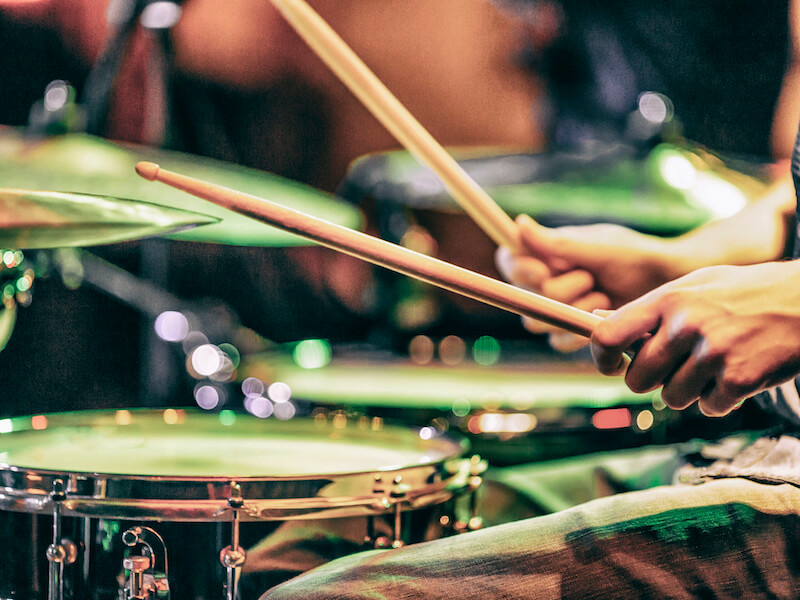
Musicians are cool! Their shows bring us so much happiness. The downside is that music is pretty much always loud, in fact, many individuals prefer it that way. Since musicians expose themselves to loud music on a daily basis, their hearing is at greater risk of being harmed.
Whether your income depends on music or not, you’ll still want to be able to hear your favorite songs when you’re pushing 60, 70, or 80. For musicians, preserving their hearing is the key to a lengthy and successful career. For the rest of us, hearing protection is the secret to a lifetime of musical fulfillment and enrichment.
Music is surprisingly loud
Most people would say that a jet engine is really loud.
Is music actually that loud? If you ask someone whether an acoustic guitar or a lone violin is noisy, they might not answer so quickly. Imagine their surprise when they discover the reality: That can also be loud music! Even classical music can get to relatively loud volumes that can easily harm your hearing.
A violin, for example, can create sounds in excess of 90 dB. That’s about as noisy as a leaf blower. In Europe, for example, they have regulations that require hearing protection for anybody who works in a setting where there is noise louder than 85 dB.
And if you’re working with music day in and day out, constant exposure to that kind of volume, especially without ear protection, can severely damage your hearing over time.
How can you protect your hearing?
Okay, musicians who want to maintain their hearing for years to come need to safeguard their hearing. So how can musicians continue to enjoy their music while also preserving their hearing?
Well, here are a couple of simple things musicians can do:
- Track your volume: Knowledge is power, right? So it follows that you should always know what volume of sound you’re subjecting your ears to. Usually, this is as easy as keeping track of your volume settings on amps and receivers. But you can also track day-to-day volume levels of environmental noises using a volume meter app that you can download on your cellphone. If the meter reads above 85dB consistently, you’ll have to address this.
- Take breaks: Much like any part of your body, your ears can become tired and might need a little break. So give yourself “hearing breaks” regularly. By doing this, noises won’t overpower and damage your ears. Duration is almost as relevant as volume with regard to hearing health. Taking breaks can be the difference between just the right amount of stimulation and too much!
Wear ear protection
Needless to say, the single most effective thing you can do to protect your ears is easy: wearing ear protection of some kind. Many musicians are hesitant to wear ear protection because they’re worried it will effect the quality of sound they hear, in addition to muting the volume. But depending on what type of hearing protection you use, that might not always be true.
- Ear plugs made primarily for musicians: Disposable earplugs are something that’s likely very familiar to most people. They’re pretty good at stopping a lot of sound though they sometimes don’t fit very well. They aren’t difficult to find, aren’t expensive, and can be disposed of easily. And they aren’t ideal for musicians. But earplugs just for musicians are also available for a little more money. A specialized material and state-of-the-art engineering are utilized to help these earplugs fit snuggly in the ear and reduce external noise by around 20% while preserving the audio clarity. This option is perfect for musicians who need a light to moderate amount of protection (and who don’t have a ton of money to invest in earplugs, or are likely to lose them).
- Electronic earplugs: The same basic functionality found in non-electronic earplugs can be found in electronic earplugs. The majority of the sound will be blocked by the earplug itself. What you hear will instead be piped in by the earplug itself. This solution is perfect for people who work in particularly loud settings, and who want more options in terms of volume control.
- In-ear monitors: Most music is electronic these days, or at least amplified by electronics. An in-ear monitor takes those electronic signals and transmits them directly to a device placed in your ear (called an in-ear monitor). Most monitors are little speakers that fit tightly and block out the majority of sound while playing sounds you want to hear at less harmful volumes. This means you can hear exactly how you sound, at a volume you control. In-ear monitors are beneficial for those who work chiefly with electronically amplified instruments.
Protect your hearing, and protect your career
It’s never too late to take measures to safeguard your ears, but it’s definitely a good plan to begin sooner rather than later. Everybody can safeguard their hearing and future with ear protection solutions for every budget. Keep in mind, ear protection for a musician is an investment in your career. It’s one way to ensure you’ll be making amazing music for years (maybe even decades) to come!
Don’t quite know where to begin? Contact us today, we can help!